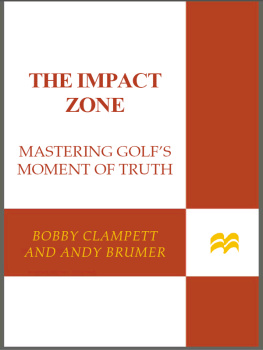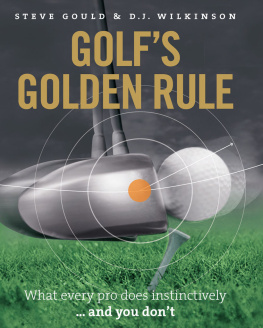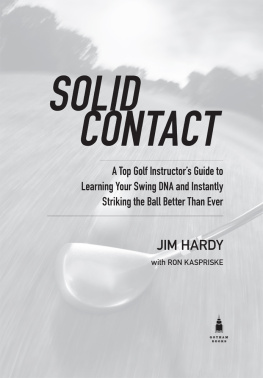Bobby Clampett - The Impact Zone: Mastering Golfs Moment of Truth
Here you can read online Bobby Clampett - The Impact Zone: Mastering Golfs Moment of Truth full text of the book (entire story) in english for free. Download pdf and epub, get meaning, cover and reviews about this ebook. year: 2007, publisher: St. Martins Publishing Group, genre: Home and family. Description of the work, (preface) as well as reviews are available. Best literature library LitArk.com created for fans of good reading and offers a wide selection of genres:
Romance novel
Science fiction
Adventure
Detective
Science
History
Home and family
Prose
Art
Politics
Computer
Non-fiction
Religion
Business
Children
Humor
Choose a favorite category and find really read worthwhile books. Enjoy immersion in the world of imagination, feel the emotions of the characters or learn something new for yourself, make an fascinating discovery.
- Book:The Impact Zone: Mastering Golfs Moment of Truth
- Author:
- Publisher:St. Martins Publishing Group
- Genre:
- Year:2007
- Rating:3 / 5
- Favourites:Add to favourites
- Your mark:
The Impact Zone: Mastering Golfs Moment of Truth: summary, description and annotation
We offer to read an annotation, description, summary or preface (depends on what the author of the book "The Impact Zone: Mastering Golfs Moment of Truth" wrote himself). If you haven't found the necessary information about the book — write in the comments, we will try to find it.
Every golfer can improve their game using the instructions in The Impact Zone by Bobby Clampett one of the most knowledgeable golfing minds in the game. Tom Lehman, British Open Champion
Impact has long been called golfs moment of truth, and great golfers have spent countless hours working on their swings trying to upgrade their impact dynamics as the golf club approaches, contacts, then swings through the ball. For the first time, with The Impact Zone, golfers will have a book that focuses their attention on the very same region of the swing on which professional golfers have always concentrated.
The Impact Zone is a unique instructional guide in that everything in it either focuses on or applies to improving a golfers understanding and execution of impact. Here, acclaimed professional golfer Bobby Clampett concludes that the overwhelming bias and convention of todays contemporary teaching environment is to value swing styles over swing dynamics, and in so doing, the overwhelming majority of golf teachers miss the boat in terms of teaching the game effectively. Ultimately this emphasis on swing style comes at the expense of helping golfers to develop sound swing dynamics, which are the real keys to consistent ball striking and better golf.
With the help of CBSs Swing Vision high-speed camerausing images from many of the games greatest contemporary players (including Tiger Woods, Phil Mickelson, John Daly, Vijay Singh, Sergio Garcia, and more)The Impact Zone takes an unprecedented look at the most important six inches in golf, those that immediately precede, contain, and follow impact. To further demonstrate these principles, Clampett presents photos and drills that convey the five essential dynamics golfers need to produce and reproduce solid impact.
Throughout these instructional pages, Bobby Clampettteamed with veteran golf writer Andy Brumerrelays his own personal story of straying from swing dynamics and how he found his way back. He recalls memorable stories from the Tour, blending innovative instruction with his colorful, engaging anecdotes.
Clampett and Brumer create an essential instructional guide with clear, concise adviceon creating great swing dynamics through the impact zonethe universally acknowledged key to more consistent and better golf.
Bobby Clampett: author's other books
Who wrote The Impact Zone: Mastering Golfs Moment of Truth? Find out the surname, the name of the author of the book and a list of all author's works by series.











